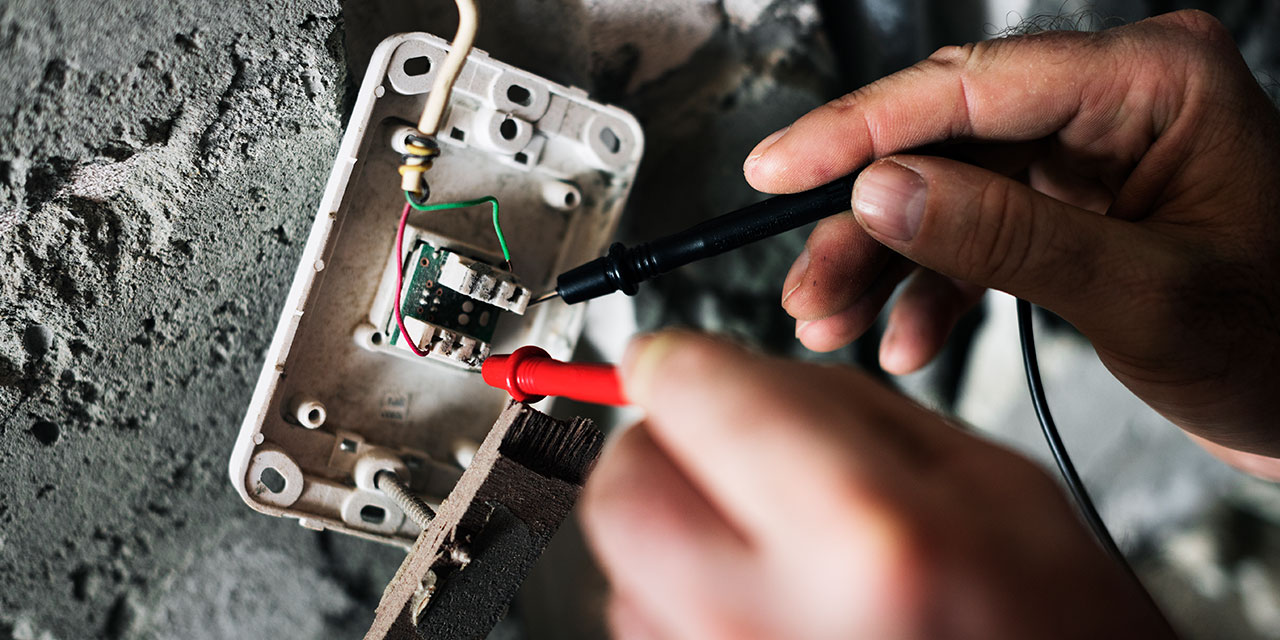Short circuits are some of the common electrical issues homeowners face, especially in homes with older wiring. These electrical problems can cause significant inconvenience and safety risks. Regular inspection and maintenance of your electrical system can help prevent them, however, some unforeseen events can lead to short circuits.
Short circuits occur when electricity flows through an unintended path, bypassing the intended load in an electrical circuit. This can result from faulty wiring, loose connections, improper installation, and other factors. But how do you identify a short circuit in your home and fix it to safely restore the power?
This blog will guide you through diagnosing and fixing short circuits in your home, empowering you to handle these electrical issues. However, if you're unsure, it's always best to hire a professional electrician for electrical tasks to ensure safety and reliable work.
Identifying a Short Circuit in Your Home
Identifying a short circuit is important to locate the problem and fix it quickly. To identify a short circuit in your home, you have to look at the common signs of short circuits, including:
Tripped Circuit Breaker or Blown Fuse
A short circuit causes a surge of electricity, which trips the breaker or blows the fuse to prevent damage. If your circuit breakers trip or fuses blow frequently, it likely indicates a short circuit.
Burning Smell or Smoke
A burning smell or visible smoke near switches, outlets, or other electrical components is a serious sign of a short circuit.
Sparks or Flickering Lights
A short circuit often leads to sparks and flickering lights. If you notice sparks from outlets or appliances or flickering lights, there is a short circuit or other issues in your electrical system.
Buzzing or Humming Sounds
A buzzing or humming sound coming from electrical panels or outlets may also indicate a short circuit or other electrical problems.
Signs of Damage
Short circuits can lead to outlet discoloration, melt insulation of wires, and affect other components. So, look for any signs of damage, such as burn marks, melted wires, or loose connections, to locate the short circuit.
Use a Multimeter
A multimeter can help identify problems with outlets, switches, appliances, and wiring by measuring voltage, current, and resistance. If you have one, use it to check for a complete circuit. If the multimeter beeps or shows a low resistance when touching two points, it indicates a short circuit.
If you are unable to locate the short circuit or lack the tools to correctly diagnose and fix shorts, it's best to call a licensed electrician for professional help.
Repairing a Short Circuit in Your Home
If you have located and understand the short circuit, proceed with caution and follow these steps for repair.
Turn off the Power
Once you have located the short, shut off power to the affected area before proceeding with the repair. After turning off the power, double-check that the circuit is indeed de-energized using a voltage detector or other appropriate tool. This will help you ensure safety while working on the issues in your electrical system. Safety is paramount when handling electrical work, so make sure to cut off power from the main switch and don’t forget to wear protective gear like gloves.
Inspect the Wiring
After isolating the affected circuit, inspect the area carefully to pinpoint the actual issue. Use a flashlight to thoroughly look for any signs of damage, such as cracks, fraying, or discoloration. Look for any loose or corroded connections and pay close attention to any exposed wires or conductors.
Repair or Replace Worn or Faulty Wiring
If faulty or damaged wiring is the cause of the short circuit in your home, repair or replace it to safely restore electricity in the affected area. First, cut out the damaged section using a wire cutter. Then, remove the insulation from the ends of the wire using a wire stripper. Now, use electrical tape or wire nuts to join the wires securely. Make sure the connection is secure and well-insulated.
If you are still confused about how to proceed, refer to this wiring repair or replacement guide or hire a professional electrician to safely fix a short circuit in your home.
Check and Replace Damaged Appliances
If an electrical short is caused by a faulty appliance, make sure to repair or replace it on time to avoid further damage, electrical hazards, and potential fire risks. Look for visible signs of damage and check internal components for frayed wires, loose connections, or burnt parts. Avoid using the faulty drive or appliance until inspected and repaired or replaced by a qualified electrician.
Various appliances have intricate designs that make it difficult to inspect and identify damage. If that is the case, call a professional to correctly diagnose the issue and know your repair or replacement options. They have the expertise and required tools to handle intricate designs and potential safety hazards, and repair or replace even the most complex appliances and electronics.
Preventing Short Circuits in Your Home
A proactive approach to electrical maintenance, including regular inspections and addressing potential issues, can help you avoid short circuits and other electrical problems. Make sure to have a professional electrician check and address any issues in your home’s electrical connection and appliances. A small effort today can help you avoid major repairs and safety risks in the future.
Trust Randy’s Electric for Electrical Safety Inspection and Regular Maintenance
Interested in keeping short circuits and other electrical issues at Bay? Rely on Randy’s Electric's expert team of licensed electricians for all your electrical needs, from general troubleshooting and maintenance to specialized residential electrical services. We strive to keep your home’s electrical system fault-free and safe with our comprehensive suite of reliable electrical services.
Get in touch with us for all electrical work in your home, and we will exceed your expectations every time. Whether it’s repair work or a new installation, we can help ensure every job is completed right the first time.


